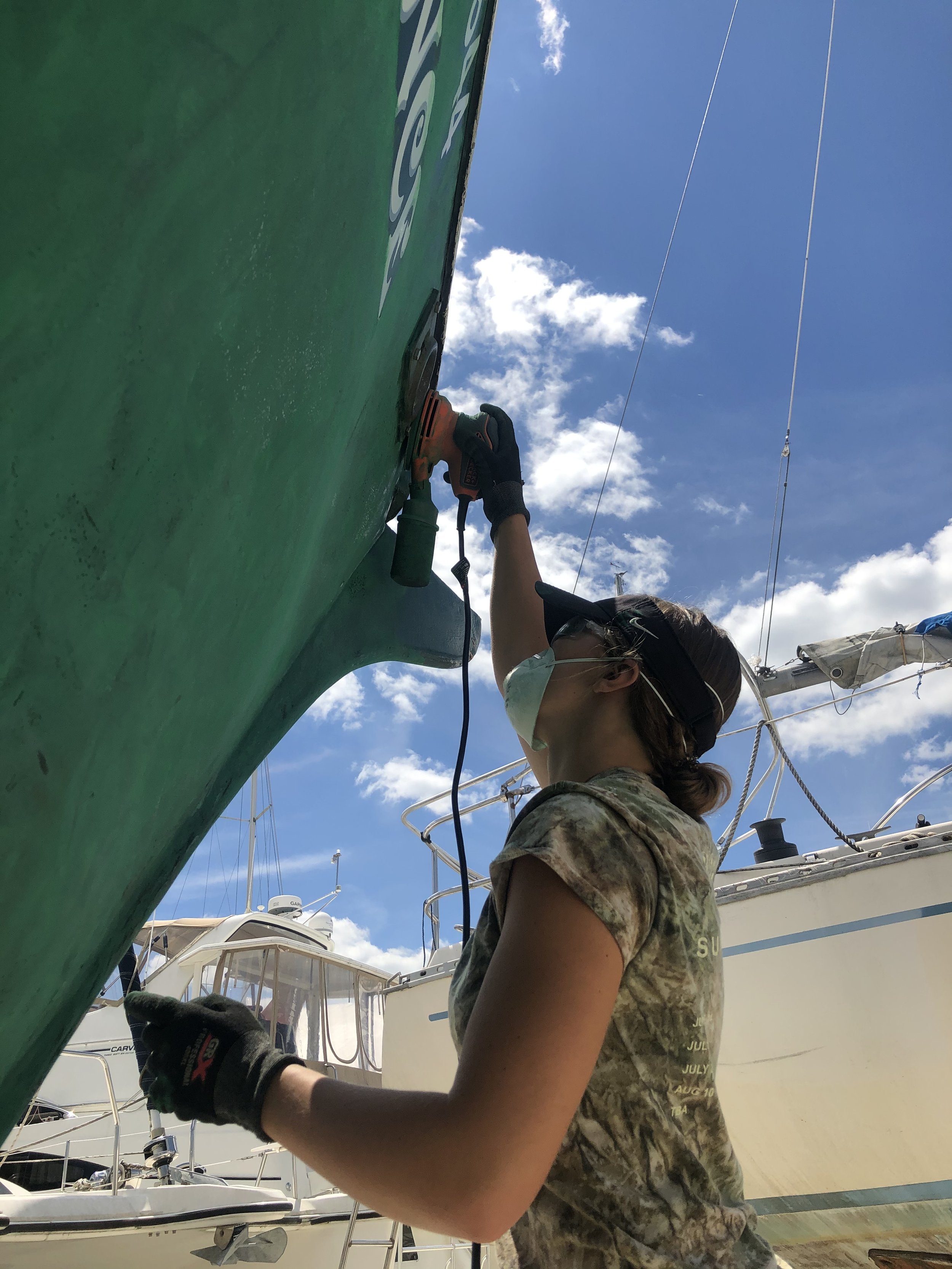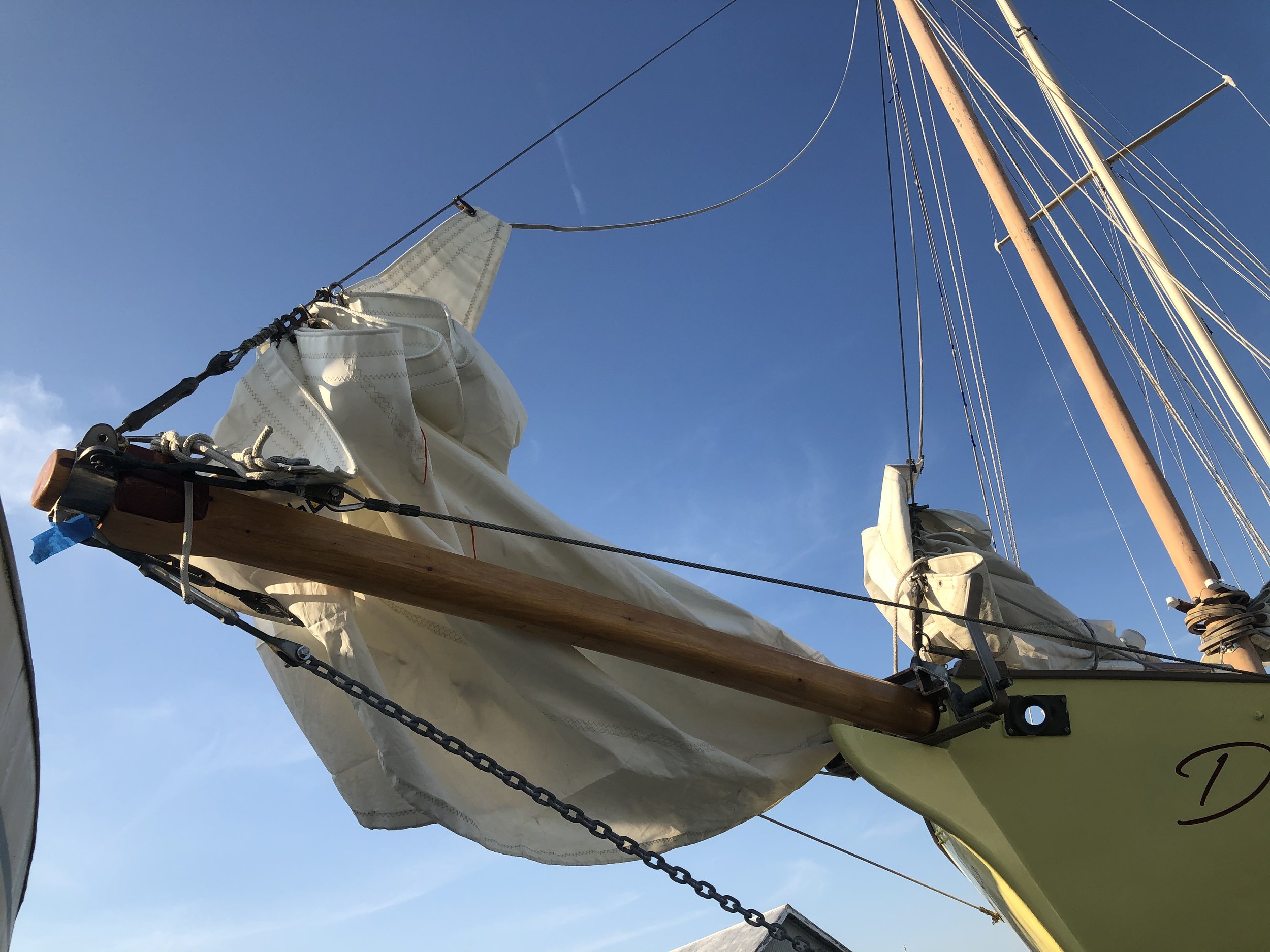Jamaica Bay and it’s ever -changing history through a mariners lens
Look familiar? Small pilot schooners such as our “Deliverance” were once commonplace sights on Jamaica Bay
Air temps are rising, less days of that frigid Northern blast as there were in January and February. Small sightings of buds on trees, the slightest green tinge on the marsh grasses of Jamaica Bay. The first sightings of the Trumpeter swans, American Oyster Catchers, the elusive Red Knot. The Cherry blossoms have opened up around the museums and parks, the sure sign that winter is indeed over - regardless of whatever curveballs Mother Nature is throwing at us.
Springs excitement is always about shedding - shedding all those sweaters and coats, possibly a few pounds gained with all that “winter storage…” Shedding old paint to make room for the new coat of the year. Even in the great city of NY, it’s about making attempts to get outside more, commune with nature in whatever manner you can. One of the greatest things about NY is how many ways you can make this happen - the myriad of the city’s parks in conjunction with its hundreds of miles of shoreline gives residents and visitors alike an absolute cornucopia of choices - much like we have when grabbing a bite on the street.
Arden shedding that old paint…
The Captain debarks and planes a raw piece of cedar for a new spar
Things really shaping up for that bowsprit!
The weeks of toil pay off - rigged and easy for sea!
For us sailors it’s time to think about “commissioning” our boats for the season, bringing them out of their winter slumber. Mother Nature plays no part in this, it’s all toil. Scraping, painting, welding, varnishing, maintenance on the motors and electrical systems. Countless hours and expenditure just to plop their hulls in the water with the hopes we didn’t forget anything serious. “Boat sinkers,” we call them. No matter how many times you’ve done it, the first drop in the “well” always brings some excitement and happiness…mostly that your work in the shipyard is over! Time to play, now - and with our Caribbean season coming to a close, our eyes are shifting North once again.
An American Oystercatcher enjoying Caribbean vibes on the shores of St. Croix, USVI in Salt River
American Oystercatchers congregate on the West end of Ruffle Bar, Jamaica Bay
We follow the birds - our good friends the oystercatchers have just begun to head off. We’ll see them soon, as they breed on Ruffle bar and we get to watch their young grow throughout the summer season, until they direct us South again in fall. Humans always seem to follow animal behavior, whether we like it or not, just like Rockaway Beach’s shores slowly start filling up with sunbathers, the wildlife of the Bay Area are one step ahead. From the almost 300 species of migratory bird to porpoises, dolphins, seals, whales, Weakfish and Striped Bass and hundreds more, critters of all types from all over the hemisphere will be passing through her shores at some point from spring to fall.
Imagery of the Sea Side House, on the bay side of Rockaway Beach in the late 1800’s.
Goose Creek, now the northern section of Broad Channel, 1913
Many of us complain about how busy things can get at the beaches in high season, but we who do a lot on the water in NY are quite lucky in 2023. A day on the sea now is quite different than it would have been 100 years ago - not just easier with all the technological advances man has come up with since, either. Back in the early days of Rockaway, the bay especially was the place to be for those who enjoyed boating, fishing, and general life on the water. From the many stilt-shack communities like Ramblersville, Goose Creek Station and Valentine’s Point to the more than 1,000 foot-long New Colossal Hotel, the bay and Rockaway were completely different entities prior to humans nearly destroying this precious place.
The Colossal Rockaway Beach Hotel at over 1,000 feet long, late 1800’s
Early sights from Broad Channel, 1910
On any given weekend day in high season, the bay’s boat liveries (rentals for small rowboats, small sailing boats, etc) would collectively have as many as 1500 hulls on the water. Boats so dense that when they all anchored at fishing “hotspots” you could jump from boat to boat for hours without ever seeing the same face twice. The hauls from fishing even for inexperienced hook and line fisherman were so stout it makes todays hardcore angler’s mouth water - dozens of flounder, bass, weakfish caught in just a couple of hours. Jamaica bay was absolutely brimming with life, and was then considered to be the wild escape from Brooklyn and Manhattan where one could be free of society’s “less than desirable” confines. $3 of the days’ currency and a visit to your local bloodworm-digger and you’re off.
A page from the Brooklyn Daily Eagle presenting Jamaica Bay as a retreat for hook and line fisherman, August 1895
NY Tribune from 1903 giving just a small glimpse of the number of boats that one could see on the bay any given day. At the peak of Boat Liveries, were as many as 1500 small vessels available for rent.
But as man could not stop his thirst for development in search of tax revenue, even the swamps of Canarsie and Rambersville began to entice their denizens. Channels were dredged, marshland filled in. Sewerage run off became so intense that even the millions of hectacres of water in the bay with its 4 tidal turns per day could not flush itself. Once the declaration came that eating shellfish from the bay was so unhealthy as to be considered a contributor to the spread of typhoid, man’s relationship with the bay changed so drastically it makes one’s head spin. On top of the sewerage came the dumping of a diverse range of wastes so toxic it’s incredible the bay was able to survive by the thread it did for so many decades. Even into the 1990’s, local bay men will tell you there were no fish. No sightings of marine mammals. Definitely no swimming. To them, the bay was dead, and would never return.
Oystering in NY was an enormous part of the city’s food supply in these days - it is said that NY as a city got as much as 30% of its protein intake from shellfish.
Man’s thirst for tax revenue caused massive mistreatment of this incredible resource throughout the years - once shell fishing was determined to be unhealthy throughout Jamaica Bay, that attitude increased exponentially.
A drawing from the NY Health Dept depicting shellfish consumption as a major contributor to the spread of Typhoid. The ecology of the bay was under such immense pressure it was thought to have totally collapsed, making the entirety a dead zone.
When we think about that being only 30 years ago, and how such simple changes in man’s behavior have had such an enormous impact on the state of things in Jamaica Bay, the hope for a better future is palpable. We have had days on the water being surrounded by the feeding frenzy of thousands of birds of various species, dropping in the water one after the other, feasting on the leavings of bluefish, weakfish and striped bass as they consume massive schools of mummuchauge, silverside and menhaden. We’re graced with excellent sailing conditions as we wave hello to Otis the seal at the sandbar nearly every day. Regularly do we encounter the massive, barnacle encrusted shells of loggerhead turtles in Yankee channel. We watch as plovers and sanderlings raise their young on the sands of the many islands within the bay - staring off as mere cotton balls with toothpicks for legs. 30 years ago these things were simply not possible.
Scene from Ruffle Bar in Jamaica Bay as viewed from the schooner “Deliverance.” Cormorants, gulls, oystercatchers, Godwits, and numerous other species of seabird are always found amongst the salt grasses in Jamaica Bay’s ecological revival.
Our friend “Otis” the seal can be seen daily at low tide sunning on his favorite haunt, the Beach Channel bridge sandbar.
Just offshore Rockaway and in the bay proper, Dolphins and
So as we think on the excitement of spring, and as we are bombarded with the many doom-and-gloom stories that our news media can’t seem to get enough of, let’s mull on about how lucky we are to have a place like Jamaica Bay. No longer bombarded with thousands of boats taking its resources, but thousands of species of flora and fauna, all within sight of the whole skyline of Manhattan but feeling thousands of miles away. We are witness to the slow process of rejuvenation that is the spring of the bay’s long, cold winter of mistreatment and neglect. Every time we get on the water, we are witness to the real-world effects that positive change can have. We see some good news, for a change.






















